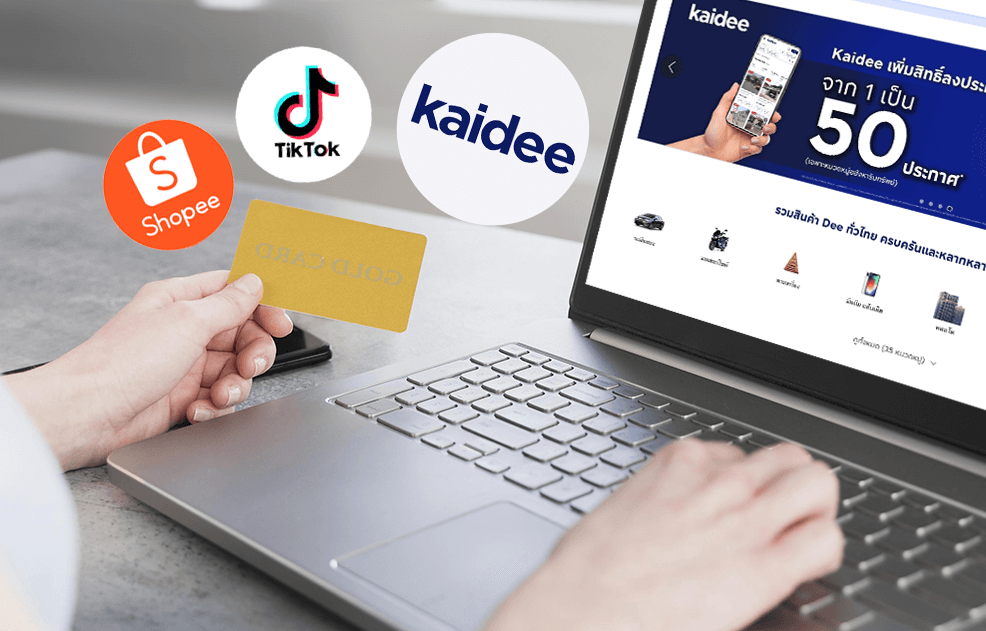We've said it before. Southeast Asia’s eCommerce Market in 3 Words: Growth, Social and MobileSoutheast Asia’s internet economy could reach 200 billion USD by 2025. We map out the Southeast Asia eCommerce market's key aspects and opportunities.Fragmentation is the name of the beast when it comes to the payment situation in South and Southeast Asia. With eCommerce booming in the region, it helps to dive a bit further in available methods. Will QR codes take over payments in these countries like they did in China? Today, we look at the South and Southeast Asian payment methods and developments in India, Indonesia, Malaysia, Singapore, Thailand and Vietnam.
India Payment Methods
India is a massive market with huge eCommerce potential. However, getting a piece of this cake is no easy task. The rural-urban divide, patchy infrastructure and limited internet access are only a few of the major challenges facing companies in the region. This also makes for an environment where a multitude of diverse payment methods exist alongside each other. Furthermore, highly specific localization, right down to the state or locality level and to the many local languages, is key.
Most Important Payment Methods
According to PPRO, the most popular way to pay for an online purchase in India is with a payment card. Cards are used in 32% of all online purchases. Next is cash, at 21%, then bank transfers at 19% and eWallets at 13%. The remaining 16% consists of other smaller, alternative payment methods (APMs).
Trends and Developments
In the next 4 years, mobile commerce (mCommerce) is projected to quadruple in the country, adding up to 45% of all online sales. This will stimulate the popularity of digital payment methods such as eWallets. Therefore, competition is heating up and many companies are eagerly looking to enter the market.
For example, Google rebranded their digital payment app 'Google Pay' and announced their cooperation with India-based financial institutions. Market leader for digital payments PayTM, originally an Indian startup, counts Alibaba and Ant Financial (which is 33% owned by Alibaba) as its backers. The service allows consumers to make seamless mobile payments from credit cards, bank accounts and digital credit, and reportedly registers almost 1 billion payments per quarter.
In February 2018, Facebook-owned WhatsApp also launched a payment feature in India that now has around 1 million users. Amazon allows customers to pay for their electricity, landline, broadband and other utilities with Amazon Pay accounts. Lastly, having an ownership stake in online marketplace Flipkart, Walmart will also reportedly introduce 2 new payment products designed for consumers who want to convert a Cash on Delivery (COD) payment to another option.
A report by Worldpay thus predicts a big drop in the popularity of COD, falling from 13.5% of the market today to just 3% in 5 years. India seems to rapidly become a digitally empowered society. Its economic development and growing consumer spending fuel the country’s journey towards a trillion-dollar digital economy by 2025.
Southeast Asian Payment Methods
With the exception of Singapore, credit and debit card penetration is low, and they are far from the most popular ways to make an online purchase. Instead, a dizzying array of online banking, eWallets, ATM, and cash-based payment methods take center-stage.
Most Important Payment Methods
Below is a short overview of the most popular payment methods per country. The numbers again come from research by PPRO.
Indonesia
The most popular way to pay for an online purchase in Indonesia is with either card or bank transfer, which tie for a 27% market share. In 15% of transactions consumers use cash and in 13%, eWallets. APMs take up the remaining 18% of the market.
Malaysia
Although just over 20% of the population owns a credit card, 33% of all online purchases are paid for by card. However, bank transfer is the most popular payment method with a 39% market share. 13% of all transactions use cash, eWallets take up 8% and APMs 7%.
Singapore
Credit cards reign supreme in Singapore as the most popular online payment method by far. They are used in 79% of all eCommerce transactions and 56% of credit cards in circulation are issued by local schemes. Consumers use eWallets 12% of the time, bank transfers account for 6%, cash 2% and APMs make up the remaining 1%.
Thailand
PPRO reports that they have no reliable payment data available for Thailand. Anecdotally, cash payments which involve users paying at a local convenience store are popular. Other sources mention that Thai consumers prefer bank transfer and around 78% of the Thai population has a bank account. Furthermore, about 4.8% of online buyers in the country use eWallets.
Vietnam
The most popular way to pay for online purchases is COD, accounting for 51% of all eCommerce transactions. The next most popular payment method is bank transfer, with 27% of the market. Going further down, card payments take up 11%, eWallets 6%, and finally APMs 4%. Although cards are used in 11% of transactions, 91% of the credit cards in Vietnam are issued by local schemes rather than the common global brands.
Trends and Developments
Throughout the SEA region, mobile and digital are the buzzwords of the day. Especially for eCommerce, mobile payments are taking off, just like India. It's not only local parties taking advantage of this trend, as international and especially Chinese companies are all looking to popularize their own payment methods.
Indonesia
In Indonesia for example, cashless payment transactions hit 31.26 trillion IDR (2.1 billion USD) from January to September in 2018. Thus, for mobile payment providers, Indonesia represents a great prize. And its largest online marketplaces are quick to jump on the train. Tokopedia launched an eWallet called BukaDana in collaboration with Emtek and Ant Financial-backed (part of Alibaba) digital wallet firm DANA. This was followed by the launch of payment installment feature BukaCicil in October 2018.
Malaysia
In Malaysia, there is already high awareness of mobile wallets, but 50% of consumers have security and fraud concerns. Furthermore, according to Malaysia’s central bank Bank Negara Malaysia (BNM), the country has more than 30 non-bank eMoney issuers in the country. This includes GrabPay, based off Singapore’s ride hailer Grab; local mobile wallets Boost and Touch ‘n Go; as well as China’s Alipay and WeChat Pay. Since none of these parties are a market leader at this moment, the main competition will still come from cash for now.
Singapore
In Singapore mobile wallets or eWallets have yet to change payment habits among Singaporean consumers. Credit cards continued to be the most preferred way to pay for online and offline purchases in 2017. Additionally, Singaporean consumers also have concerns regarding data security and privacy. At the same time, Singapore's usage of mobile payments has grown by 53% since 2017. With more merchants accepting digital payment methods, and banks increasingly offering the possibility, this will become a large incentive for Singaporean consumers to leave cash behind.
Thailand
Like its neighboring countries, Thailand is pushing for greater of adoption of mobile payments. Industry participants, including government agencies, financial institutions and fin-tech companies, all actively work towards increasing awareness and accelerating adoption. Besides familiar names like Grab and Lazada, local players also rack up users. Notably, the social media app LINE offers Rabbit LINE Pay, which serves some 4.5 million users in Thailand.
Vietnam
Lastly, Vietnam is home to more than 20 fin-techs in the online payments sector. Currently, MoMo is the largest mobile wallet provider, setting itself apart by offering a better user experience and forging early partnerships with incumbent players. The Vietnamese mobile payment market is projected to reach 70.937 million USD by 2025, growing at a CAGR of 18.2% from 2018 to 2025. At Sacombank, the number of registrations for mobile banking reached 1.1 million accounts in October 2018. VietinBank, the country’s second largest lender by assets, registered 1.5 million people using mobile banking and engaging in transactions totaling 64,35 trillion VND (2,76 billion USD) between January and June 2017.
South and Southeast Asia eCommerce
Do you want to know more about the developments and trends in South and Southeast Asian eCommerce? Then check out our complete 6-part series providing an overview, as well as details about all aspects of eCommerce in this booming region.
- Most Important South and Southeast Asian eCommerce Market Developments - Pt.1We delve into the South and Southeast Asian eCommerce volume and market potential of India, Indonesia, Malaysia, Singapore, Thailand and Vietnam.Most Important South and Southeast Asian eCommerce Market Developments - Pt. 1
- Most Important South and Southeast Asian eCommerce Market Developments - Pt. 2We delve into other South and Southeast Asian eCommerce developments in India, Indonesia, Malaysia, Singapore, Thailand and Vietnam.Most Important South and Southeast Asian eCommerce Market Developments - Pt. 2
- Defining South and Southeast Asian eCommerce ConsumersWe provide a detailed profile of South and Southeast Asian eCommerce consumers in India, Indonesia, Malaysia, Singapore, Thailand and Vietnam.Defining the South and Southeast Asian eCommerce Consumers
- South and Southeast Asian eCommerce Marketplaces: Who's WhoAn overview of the most popular South and Southeast Asian eCommerce Marketplaces in India, Indonesia, Malaysia, Singapore, Thailand and Vietnam.The Most Popular South and Southeast Asian eCommerce Marketplaces
- South & Southeast Asian eCommerce Logistics: Opportunities Meet ChallengesRead about trends and characteristics of South and Southeast Asian eCommerce logistics in India, Indonesia, Malaysia, Singapore, Thailand and Vietnam.South & Southeast Asian eCommerce Logistics: Opportunities Meet Challenges
You also might be interested in our Southeast Asia eCommerce Outlook 2024This free PDF takes a broad view of eCommerce across five of Southeast Asia's most exciting markets: statisics, market structure, trends, entry strategy.Southeast Asia eCommerce Outlook, which gives a broad overview of some of Southeast Asia's most exciting markets.













